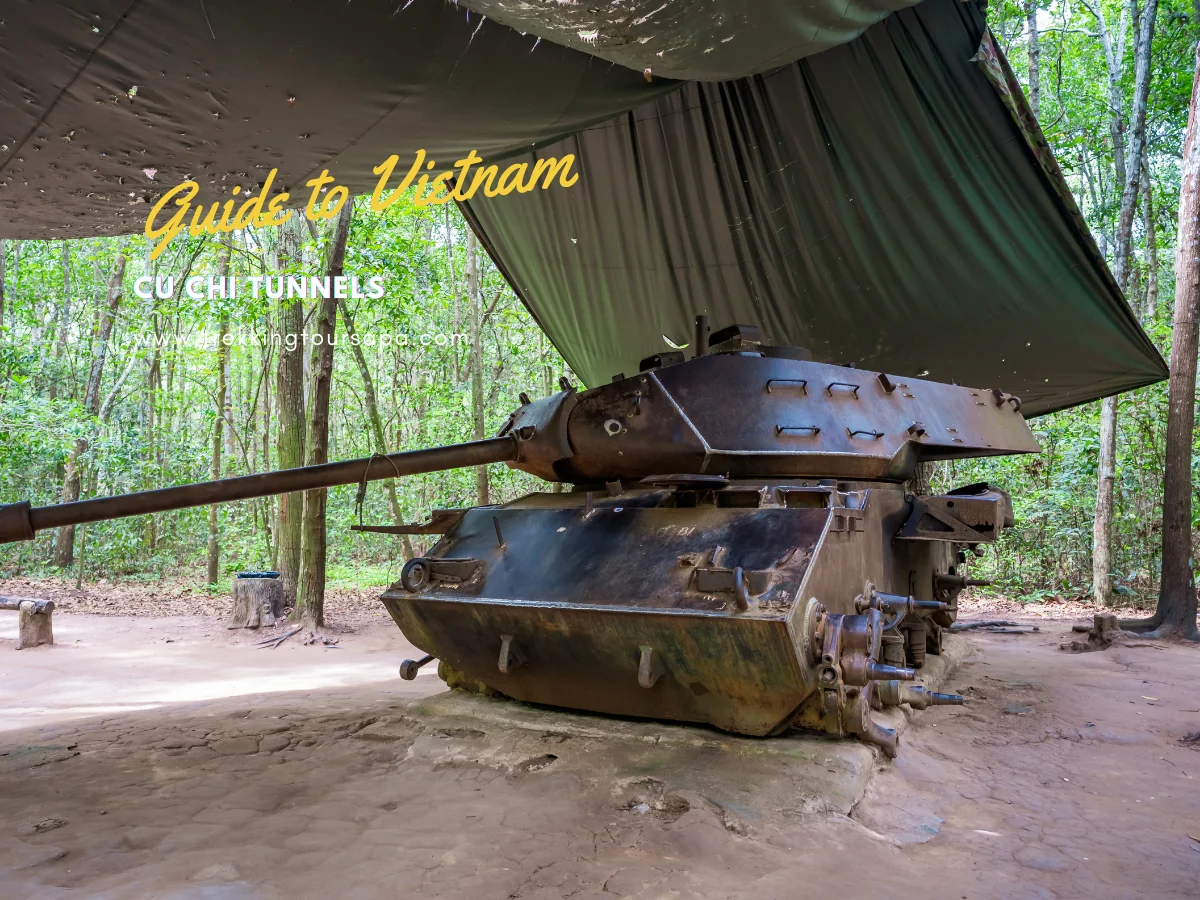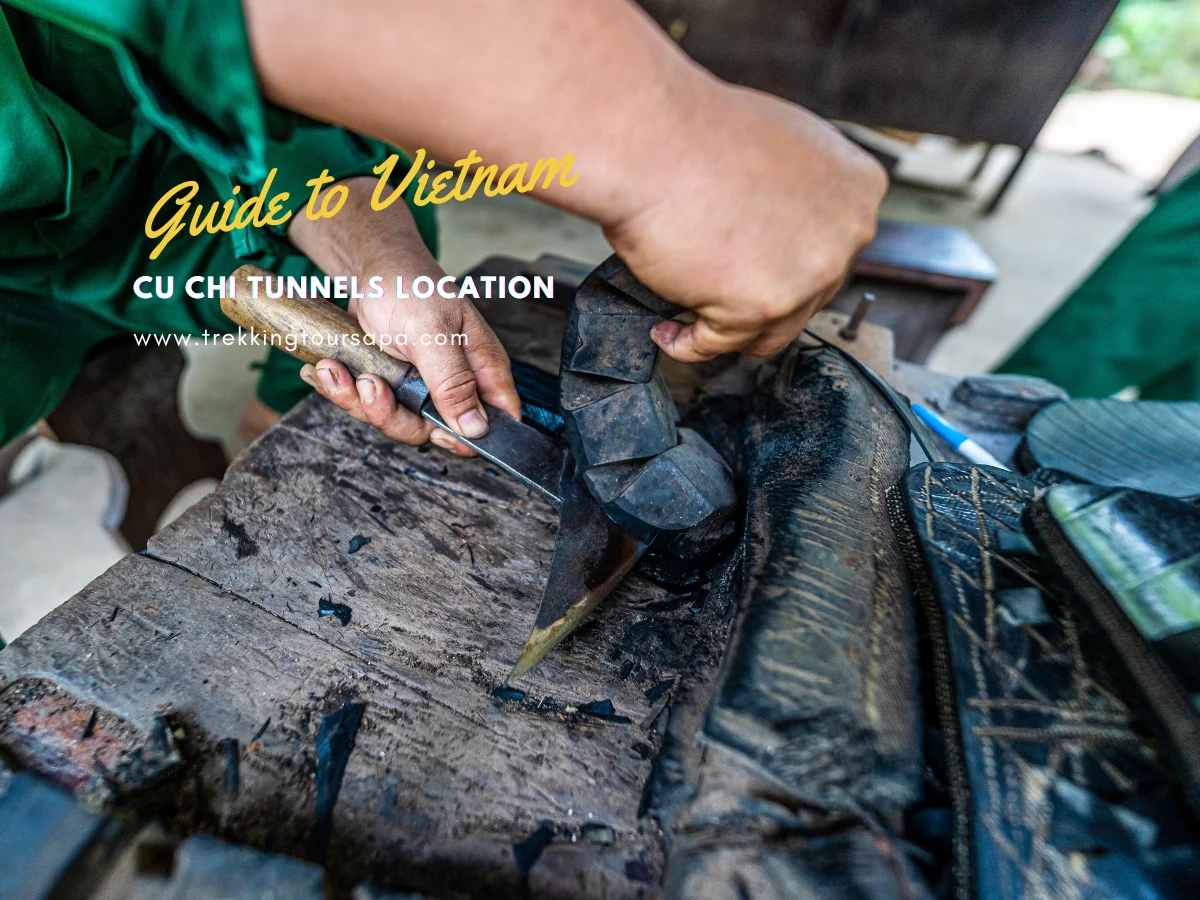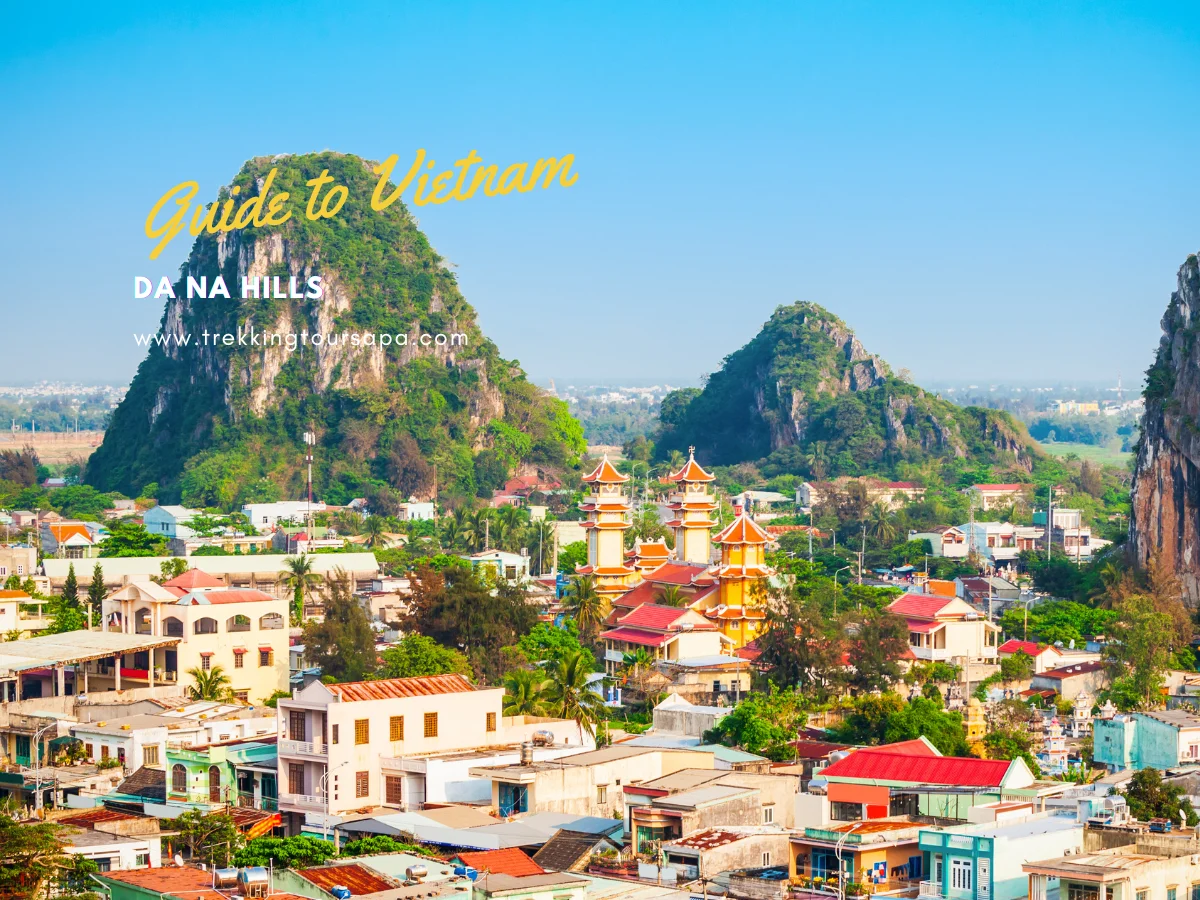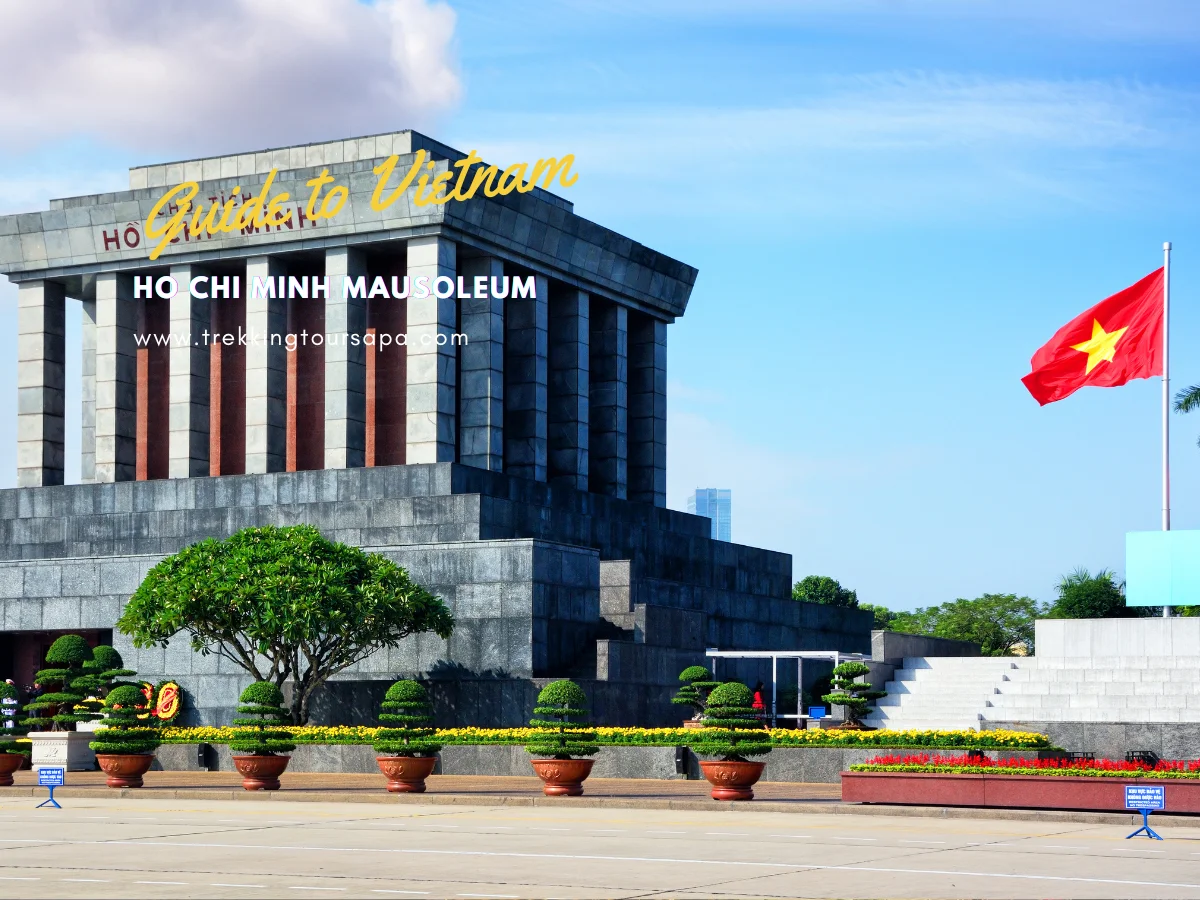The Best Sapa Trekking Tours For Photography Enthusiasts
Are you a photography enthusiast looking for an adventure in the mountains? Sapa, located in Northern Vietnam, is a destination that should be at the top of your list. The stunning landscapes and vibrant cultures make it a perfect place to capture breathtaking photographs.
When it comes to exploring Sapa, trekking tours are the best way to experience all that this region has to offer. With so many options available, it can be overwhelming trying to choose which tour will provide you with the best photographic opportunities. In this article, we will share with you some of the best Sapa trekking tours for photography enthusiasts like yourself. So pack your camera gear and let’s hit the trails!
Table of Contents
ToggleOverview of Sapa’s Photographic Opportunities
Now let’s take a closer look at what you can expect to capture on your journey through Sapa‘s unique landscapes. This region is known for its breathtaking rice terraces, lush green mountains, and traditional villages that seem unchanged by time. The best times to capture Sapa’s beauty are during the autumn months, from September to November, when the rice paddies turn golden yellow and the sky is clear. In the winter months, from December to February, you can witness the rare phenomenon of snow falling in this tropical area.
Aside from its natural wonders, Sapa also offers opportunities for cultural photography. You can interact with local ethnic tribes such as Hmong and Red Dao people who still maintain their traditional way of life. Their colorful clothing and intricate handicrafts make for stunning portrait shots. With so much to explore in Sapa, it’s important to choose a trekking tour that suits your interests and needs.
Factors to Consider When Choosing a Trekking Tour
When selecting a trekking tour for photography enthusiasts in Sapa, there are several factors that should be taken into account. Firstly, the group size is important as it can affect your ability to capture great shots. A smaller group allows for more flexibility and personalized attention from the guide, which can lead to better photographic opportunities. Additionally, consider the duration of the tour; longer tours may offer more chances to explore different areas and capture diverse shots.
Another factor to consider is the guide’s expertise. A knowledgeable and experienced guide can provide valuable insights on local culture and help identify ideal photo spots. Moreover, it’s essential to select a trekking tour with an appropriate difficulty level based on your fitness level and experience with hiking. Opting for a challenging hike without proper training or equipment may hinder your ability to take photos comfortably and safely during the trek. By keeping these factors in mind when selecting a trekking tour in Sapa, you’ll be sure to have an enjoyable and productive photography adventure.
Now that you’ve considered these critical factors when choosing a trekking tour, let’s take a closer look at one of the best options available: The Sapa Sisters Trekking Tour. This female-run company offers personalized trips that cater explicitly to photographers’ needs while supporting local communities’ development through sustainable tourism practices. With expert guides who understand the area intimately, they provide unique perspectives on capturing stunning shots of rice terraces, ethnic minority villages, and breathtaking landscapes of Northern Vietnam’s highlands.
Sapa Sisters Trekking Tour
Immerse yourself in the stunning natural beauty and vibrant culture of Northern Vietnam’s highlands with Sapa Sisters Trekking Tour. This female-run trekking tour offers personalized experiences while supporting local communities. Here are some reasons why you should choose this tour for your next photography adventure:
- Best Routes: Sapa Sisters offers a variety of routes that cater to different fitness levels and interests. Whether you want to explore terraced rice fields, waterfalls, or ethnic villages, their experienced guides will take you on a journey through breathtaking landscapes that will inspire your creativity.
- Packing Essentials: The weather in Sapa can be unpredictable, so it’s important to pack wisely. Sapa Sisters provides a comprehensive packing list on their website that includes items such as sturdy hiking boots, rain gear, and a camera with extra batteries and memory cards. They also advise travelers to bring cash as there are limited ATM machines in the area.
With Sapa Sisters Trekking Tour, you’ll not only capture amazing photos but also support local women who are breaking gender barriers in the tourism industry. Their ethos aligns with yours if you’re interested in responsible travel practices and empowering women. In the next section, we’ll introduce another trekking tour that shares similar values – Ethos Adventure Trekking Tour.
Ethos Adventure Trekking Tour
When it comes to eco-friendly practices, Ethos Adventure Trekking Tour stands out by committing to sustainable tourism and supporting local communities. They offer unique homestay opportunities that allow you to experience the local culture and way of life firsthand. Additionally, their tours are customizable, ensuring you get the most out of your trekking adventure in Sapa while accommodating your preferences and interests.
Focusing on Eco-Friendly Practices
By choosing a tour that prioritizes eco-friendly practices, you can experience the beauty of Sapa while leaving a positive impact on the environment. Ethos Adventure Trekking Tour stands out for their commitment to sustainable tourism. They work closely with local communities, implementing measures to reduce waste and pollution during treks. For example, all meals are cooked using natural fuels such as wood or charcoal, instead of gas stoves that produce harmful emissions.
The importance of eco-friendly practices cannot be overstated. By minimizing our impact on nature, we help preserve it for future generations. Additionally, engaging in sustainable tourism can have significant benefits for local communities and the environment. Ethos Adventure Trekking Tour provides training and employment opportunities to locals as guides or homestay hosts. Moreover, they support reforestation efforts by planting trees and educating visitors about environmental conservation. By choosing an eco-friendly tour like Ethos Adventure Trekking Tour, you not only get to capture stunning photographs but also contribute positively to the community and the planet.
As a bonus, Ethos Adventure Trekking Tour provides unique homestay opportunities that allow you to experience authentic village life firsthand – this will be discussed more in-depth in the next section!
Providing Unique Homestay Opportunities
When it comes to eco-friendly practices, community integration and cultural immersion are key components. As a photography enthusiast looking for the best Sapa trekking tour, you want to not only capture stunning landscapes but also experience the local way of life. That’s why our tours provide unique homestay opportunities that allow you to fully immerse yourself in the culture and interact with locals.
Here are three reasons why our homestays stand out:
- Authenticity: Our homestays are not just tourist accommodations; they are actual homes where locals live and work. This provides an authentic experience that cannot be found in hotels or resorts.
- Sustainability: By staying with locals, you directly support their livelihoods and promote sustainability within the community.
- Cultural Exchange: Homestays offer a chance to learn about local traditions, customs, and way of life through firsthand experiences such as cooking meals together or participating in daily activities.
With these unique homestay opportunities, you’ll have a deeper understanding of the local culture and create unforgettable memories during your Sapa trekking tour. But what if you want more control over your itinerary? Our next subtopic explores how we offer customizable tours tailored to your interests and preferences.
Offering Customizable Tours
At our company, we understand that every traveler has unique interests and preferences. That’s why we offer customizable packages that allow you to craft your own personalized itinerary. Whether you’re a photography enthusiast seeking the best spots to capture stunning landscapes or an adventure seeker looking for adrenaline-pumping activities, we’ve got you covered.
Our team of experienced guides will work with you to create a tailored tour that suits your needs. You can choose from a range of activities such as trekking, cycling, homestays, and cultural experiences. We’ll help you select the best locations and arrange transportation so that you can focus on enjoying your trip without worrying about logistics. With our personalized itineraries, you can be sure that your journey will be one-of-a-kind and unforgettable. So why wait? Book now and let us help make your dream vacation a reality!
Now that you know about our customizable tours, let’s dive into one of our most popular packages: the Sapa O’Chau Trekking Tour. This adventure takes you through some of Vietnam’s most picturesque landscapes while immersing you in local culture. From rice terraces to waterfalls, this trek offers incredible opportunities for photography enthusiasts to capture breathtaking shots at every turn. Plus, with our experienced guides leading the way, you’ll get insider access to hidden gems that only locals know about. So pack your bags and join us on this once-in-a-lifetime journey!
Sapa O’Chau Trekking Tour
When you book a Sapa O’Chau Trekking Tour, you are not only immersing yourself in the stunning landscapes of northern Vietnam – you are also supporting local communities. Sapa O’Chau is a social enterprise that provides education and job opportunities for minority youth in the area, so your visit helps to fund these important initiatives. In addition to benefiting the community, Sapa O’Chau offers diverse tour packages that cater to different interests and activity levels, ensuring that there is something for everyone on their treks.
Supporting Local Communities
You can support the local communities in Sapa by choosing to engage in activities that allow you to interact with them and learn about their culture and way of life. By doing so, you are not only contributing to community empowerment but also playing a vital role in cultural preservation. Here are three ways you can support the locals during your trekking tour:
- Stay at a homestay: Homestays provide an opportunity for visitors to stay with local families, share meals, and immerse themselves in the daily lives of the people. This experience will give you a window into how they live, work and play.
- Shop at local markets: When buying souvenirs or food supplies for your trekking trip, opt for locally sourced products. Not only does this help keep money within the community, but it also provides an opportunity to connect with vendors and learn more about their crafts.
- Take part in cultural events: Many villages organize festivals or celebrations throughout the year. Participating in these events helps preserve their traditions while providing visitors with an authentic experience.
By supporting local communities during your Sapa trekking tour, you’ll gain firsthand knowledge of their culture, history, and way of life while contributing to sustainable tourism practices. Up next is another essential aspect of responsible tourism – providing educational opportunities.
Providing Educational Opportunities
Learning about the local culture and customs is a piece of cake when you provide educational opportunities during your trip to Sapa. Many of the ethnic minority groups in Sapa have unique traditions and ways of life that are worth exploring. By offering skills development programs, language classes, and cultural exchange activities, you can gain a deeper understanding of their lifestyle while also contributing to their sustainable development.
For instance, some tour operators partner with local schools to offer English lessons for the children who live in remote villages. This not only benefits the kids but also gives travelers a chance to interact with them on a more personal level. Additionally, workshops on traditional handicrafts such as embroidery and weaving are another way to connect with the locals while learning new skills. These experiences not only enrich your travel experience but also create positive impacts for local communities.
With these educational opportunities, you will have a better appreciation for Sapa’s rich heritage and customs. As you transition into the subsequent section about ‘offering diverse tour packages,’ keep in mind that incorporating educational elements into your itinerary can make it even more meaningful and rewarding for both yourself and the locals you meet along the way.
Offering Diverse Tour Packages
If you’re looking to spice up your itinerary, consider diversifying your tour packages to include activities like custom tour options, homestays, cooking classes, or community service projects. Custom tour options are particularly helpful for photography enthusiasts who want to capture the best shots of Sapa’s stunning landscapes and vibrant culture. Opting for a customized package allows you to tailor your trip according to your specific interests and preferences.
The best time to visit Sapa is between September and November when the rice paddies turn golden yellow and the weather is cool and dry. However, if you’re planning on trekking in Sapa during this period, make sure to book in advance as it’s peak season for tourism. By offering diverse tour packages that cater to different interests and budgets, travel agencies can attract more visitors and provide them with a unique experience that they’ll never forget.
Topas Ecolodge Trekking Tour
When you choose the Topas Ecolodge Trekking Tour, you’ll be supporting sustainable tourism in Vietnam. This eco-friendly lodge is fully committed to reducing its environmental impact while still providing luxurious accommodations for guests. With unmatched views of Sapa‘s stunning landscapes and rice terraces, this tour is perfect for photography enthusiasts looking to capture breathtaking shots of one of Vietnam’s most beautiful regions.
Emphasizing Sustainable Tourism
By prioritizing sustainable tourism practices, we can ensure that our travels to this beautiful region have a positive impact on the environment and local communities. Sustainable tourism is about balancing conservation and exploration, so that we are able to enjoy the natural beauty of Sapa without causing harm to its delicate ecosystem. Here are some ways in which we can practice sustainable tourism:
- Choose eco-friendly accommodations such as Topas Ecolodge, which has been designed with sustainability in mind.
- Support community-based tourism initiatives that empower local communities and provide them with economic opportunities.
- Respect cultural norms and traditions, especially when it comes to dress codes and behavior around religious sites.
- Avoid littering or damaging natural habitats by following designated trails and disposing of waste responsibly.
By taking these simple steps, we can help preserve Sapa’s natural beauty for future generations while also supporting the livelihoods of those who call this region home. In addition to promoting sustainable tourism practices, Topas Ecolodge also provides luxurious accommodations for guests who want to experience the best of both worlds.
Providing Luxurious Accommodations
You may think that sustainable tourism means sacrificing comfort, but at Topas Ecolodge, you’ll be pleasantly surprised to find luxurious accommodations that are designed with eco-friendliness in mind. Each of the 33 bungalows is equipped with all the luxury amenities you could ask for, including plush bedding, a private balcony, and stunning views of the surrounding mountains. The lodge’s location is equally impressive – nestled on a hilltop overlooking the picturesque Muong Hoa Valley, guests can enjoy unparalleled views from every angle.
But don’t let the luxurious accommodations fool you – Topas Ecolodge is committed to sustainability and minimizing its impact on the environment. All buildings were constructed using locally-sourced materials and traditional building techniques, while solar panels provide electricity throughout the property. Plus, their waste management system ensures that they recycle as much as possible and minimize their carbon footprint. So not only can you enjoy a comfortable stay in one of Vietnam’s most scenic locations, but you can do so knowing that your vacation is helping to support sustainable tourism practices.
Transitioning into our next topic: offering unmatched views of Sapa…
Offering Unmatched Views of Sapa
You’ll be amazed by the breathtaking views of the Vietnamese countryside from Topas Ecolodge, where every angle offers an unparalleled glimpse into the natural beauty of your surroundings. This luxurious lodge is located on a hilltop that overlooks the Hoang Lien Son Mountains, which makes it one of the best viewpoints for photographing Sapa’s stunning landscapes. From here, you can watch as misty clouds roll over lush green rice terraces and ethnic minority villages tucked away in the mountainside.
If you’re a photography enthusiast, Topas Ecolodge is definitely worth considering for your Sapa trekking tour. Its prime location guarantees spectacular photo opportunities that will make any camera happy. Whether you’re using a professional-grade DSLR or just your smartphone, you can capture amazing shots of Sapa’s picturesque scenery. But don’t worry if you’re not familiar with photography tips – our experienced guides will gladly share their knowledge to help you get the best possible shots during your trip.
Tips for Capturing Great Photographs During Your Trek
When it comes to choosing the right camera equipment for your trek, make sure you prioritize portability and durability. Consider investing in a lightweight tripod for stability during low light conditions or long exposures. Mastering composition techniques such as leading lines, rule of thirds, and framing can greatly enhance the visual impact of your photographs. Additionally, always be mindful of cultural sensitivities and ask for permission before taking photographs of people or sacred sites.
Choosing the Right Camera Equipment
Capturing the stunning landscapes and vibrant culture of Sapa requires careful consideration of camera equipment. To ensure that you capture the best possible photographs, it is important to choose the right camera settings and lens selection. Here are some key factors to keep in mind when selecting your equipment:
- Camera Settings: When taking photographs in Sapa, you’ll want to experiment with different camera settings to get the best results. For example, try using a slower shutter speed to capture movement in waterfalls or clouds, or increase your ISO for low-light situations.
- Lens Selection: Choosing the right lens can make all the difference in your photography. A wide-angle lens is perfect for capturing sweeping landscapes, while a telephoto lens can help you zoom in on wildlife or details of architecture.
- Tripod: A tripod can be especially useful when taking landscape photos as it allows you to take long exposure shots without worrying about camera shake.
- Accessories: Consider bringing along accessories like filters and a remote shutter release to further enhance your photography experience.
As you consider these factors, keep in mind that mastering composition techniques will also play an important role in capturing high-quality photographs during your trek through Sapa’s picturesque terrain and villages.
Mastering Composition Techniques
If you want to take truly captivating photos of the breathtaking landscapes and vibrant culture of Sapa, mastering composition techniques is essential. To start with, try applying the rule of thirds – a basic principle in photography that involves dividing your frame into thirds horizontally and vertically. Place important elements such as mountains or rice terraces on those intersecting points for a more balanced and visually pleasing effect.
Another useful technique is using leading lines to draw the viewer’s eye towards the main subject of your photo. The curvy roads, bamboo bridges, and rows of houses in Sapa all make great leading lines. In addition, understanding color theory can help you create mood and atmosphere in your photos. For instance, warm colors like reds and yellows evoke coziness while cool colors like blues and greens communicate calmness. Finally, don’t forget about depth of field – adjusting your aperture to blur out the foreground or background can add dimensionality to your images.
As you explore Sapa with your camera, it’s also important to be mindful of cultural sensitivities. The locals are friendly but they may not appreciate being photographed without permission or having their private lives exposed online. Always ask for consent before taking someone’s portrait and respect their answer if they decline. Additionally, avoid shooting during religious ceremonies or at sacred sites unless explicitly allowed by the authorities. By following these guidelines, not only will you capture stunning photographs but also show respect towards the people who call Sapa home.
Being Mindful of Cultural Sensitivities
It’s important to be aware of cultural sensitivities when taking photos in order to respect the locals and their way of life. As a photographer, it’s easy to get caught up in capturing the perfect shot without realizing the impact it may have on the community you’re visiting. Here are some cultural sensitivity tips and respectful photography practices to keep in mind:
- Respect local customs and dress codes: In some cultures, it may be inappropriate to wear revealing clothing or show too much skin. Make sure to research the appropriate attire before your trip and dress accordingly.
- Ask for permission before taking photos: Not everyone wants their photo taken, especially in sacred or private spaces. Always ask for permission before snapping away, and if someone declines, respect their wishes.
By being mindful of cultural sensitivities, not only will you avoid offending locals but also create a more authentic and ethical travel experience.
Another important aspect of respectful photography is avoiding perpetuating harmful stereotypes or exoticizing people from different cultures. Here are two sub-lists to keep in mind:
1) Avoid these harmful stereotypes:
- portraying people as primitive or uncivilized
- showcasing poverty as a defining characteristic of a culture
2) Embrace diversity:
- capture everyday moments that showcase diverse lifestyles
- highlight positive aspects of different cultures such as art, cuisine, and traditions
As photographers, we have a responsibility to tell honest stories through our images while respecting those we encounter along the way. By being mindful of cultural sensitivities and embracing diversity, we can capture stunning shots that celebrate humanity’s rich tapestry of cultures.
The Best Sapa Trekking Tours For Photography Enthusiasts Frequently Asked Questions
What are some common mistakes photographers make during a Sapa trekking tour?
Photography enthusiasts often make common mistakes during their Sapa trekking tour that can negatively impact the quality of their shots. One common mistake is failing to plan for the lighting conditions in different areas. To avoid this, it’s important to research the best time of day to capture certain landscapes and adjust your camera settings accordingly. Another mistake is neglecting to include people or animals in your photos, which can result in dull and lifeless images. Incorporating human subjects or local wildlife into your shots adds depth and interest to your photographs. Remember these tips for better shots on your next Sapa trekking adventure!
Are there any special permits or permissions required for photography in Sapa?
If you’re planning to capture stunning photos during your Sapa trek, it’s important to know that there are certain permits and restrictions in place. Some areas may require special permits before taking photographs, and it’s essential to respect cultural sensitivity and etiquette when taking pictures of locals or religious sites. For example, it’s considered impolite to take pictures of Hmong women without their consent or while they’re working in the fields. Additionally, be aware of any rules regarding drone photography as some areas may prohibit their use. Remember that respecting local customs is key to creating a positive experience for everyone involved.
What kind of equipment is recommended for photography during a Sapa trekking tour?
When embarking on a Sapa trekking tour, it’s important to have the right camera equipment to capture those breathtaking moments. Camera accessories like tripods, filters and extra lenses can add depth and dimension to your shots. As for ideal camera settings, consider shooting in manual mode for greater control over aperture, shutter speed and ISO. This will allow you to adjust your settings based on lighting conditions and desired effects. Remember that photography is a form of expression and creativity, so don’t be afraid to experiment with different angles and perspectives. Ultimately, the best camera is the one you have with you, so focus on capturing the moment rather than getting hung up on technical details.
Can non-photographers enjoy the trekking tours offered in Sapa?
If you’re not a photographer, don’t worry – there are still plenty of benefits to be had from trekking tours in Sapa. You can immerse yourself in the natural beauty of the landscape, take part in local cultural activities like visiting ethnic minority villages and learning about their customs, and enjoy the physical challenge of hiking through the mountains. There are also opportunities for relaxation, such as soaking in hot springs or trying out traditional herbal baths. Whether you’re looking for adventure, culture, or just a chance to unwind, there’s something for everyone on a Sapa trekking tour.
Are there any specific cultural customs or practices that photographers should keep in mind while taking pictures in Sapa?
As a photographer interested in capturing the beauty and culture of Sapa, it’s important to keep in mind photography etiquette and cultural sensitivity. While snapping photos of locals or cultural sites, make sure to ask for permission first, as many Hmong people believe that taking their picture will capture part of their soul. Also, be respectful of any customs or practices you may witness while exploring Sapa. For example, if you come across a funeral procession, avoid taking pictures out of respect for the deceased and their family. By being mindful and respectful during your photography journey in Sapa, you can not only take stunning photos but also appreciate the rich culture and traditions that make this region so special.
Conclusion
Congratulations on choosing to embark on a photography-focused trekking tour in Sapa! You are about to experience some of the most breathtaking scenery and cultural experiences that Vietnam has to offer. By selecting one of the top tours, such as Sapa Sisters or Ethos Adventure, you can ensure that you have knowledgeable guides who will take you off the beaten path and provide unique opportunities for stunning photographs.
As you pack your camera gear and prepare for your adventure, keep in mind that this is not just a trip – it’s an opportunity to capture memories that will last a lifetime. With the right mindset and preparation, you can create images that truly tell a story and evoke emotion from those who view them.
So go ahead and embrace your inner Ansel Adams or Dorothea Lange – with the right tour company, equipment, and techniques, there’s no limit to what amazing images you can capture during your Sapa trek. And remember: every photo is a chance to freeze time and share your experience with others long after your journey has ended. So get out there and make some history!




